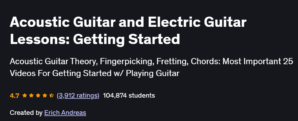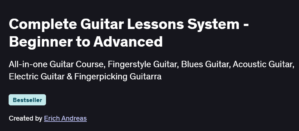Orchestration Course
A comprehensive orchestration masterclass that equips composers and arrangers with deep instrument knowledge and practical scoring skills through rigorous examples and quizzes.
What will you learn in Orchestration Course
Understand the full orchestra: each instrument’s construction, sound production, notation, transposition, range, register strengths, dynamics, and playing techniques
Prepare professional scores and parts, including proofreading tips before publishing or performance
Employ timbral and textural strategies: spacing, voicing in orchestral chords, instrument combinations, and roles within the ensemble
Read and interpret scores effectively, reinforced with hundreds of examples, diagrams, audio clips, and nearly 1,000 quiz questions
Program Overview
Module 1: Instrumentation – Woodwinds & Brass
⏳ 3 hours
Topics: Detailed study of woodwind and brass instruments—their anatomy, sound production, ranges, transposition, and notational conventions
Hands-on: Analyze score excerpts, map parts for each instrument, and complete quiz questions on woodwind/brass characteristics
Module 2: Instrumentation – Strings & Percussion
⏳ 3 hours
Topics: String and percussion families—construction, timbral possibilities, playing techniques, dynamic capabilities, and notation
Hands-on: Create instrumentation charts, assign parts in sample passages, and proof percussion notation examples
Module 3: Orchestration Techniques
⏳ 4 hours
Topics: Chord spacing and voicing for orchestra; blending sections; timbral contrast and texture creation techniques
Hands-on: Score a short four-part orchestral chord progression with proper voicing and register mapping
Module 4: Score & Parts Preparation
⏳ 2 hours
Topics: Best practices for preparing conductor scores and individual parts, proofing workflows, and alignment checks
Hands-on: Format a mini-score and extract parts, then execute a proofing checklist on notation accuracy
Module 5: Timbre, Texture & Color
⏳ 3 hours
Topics: Exploring orchestral color—instrument combinations, dynamic layering, and textural depth; use of extended techniques
Hands-on: Design three contrasting orchestral textures for a given melody using different section groupings
Module 6: Score Reading & Analysis
⏳ 3 hours
Topics: Strategies for effective score reading; historical and stylistic context; interpreting composer intent
Hands-on: Complete listening/reading assignments with score excerpts, followed by analytical quizzes
Module 7: Orchestration Tips & Appendix Resources
⏳ 2 hours
Topics: Advanced tips and techniques from award-winning composer; reference charts, external resource compilation
Hands-on: Utilize appendix charts to orchestrate a brief passage and validate choices against recommended guidelines
Get certificate
Job Outlook
Orchestration skills are in demand for film scores, game audio, concert works, and virtual instrument sample libraries.
Freelance orchestrators earn $50–$150 per hour depending on project scope and reputation; staff orchestrators in media industries can command salaries of $60k–$100k USD annually.
Mastery of orchestration enhances career paths as composers, arrangers, copyists, and music editors in classical, media, and gaming sectors.
Proficiency in score preparation tools and deep knowledge of instrument capabilities open opportunities in education, publishing, and software sound development.
- Taught by award-winning composer Jonathan Peters with extensive real-world credentials
- Two-part structure ensures solid grounding in individual instruments before advancing to full orchestration
- Nearly 1,000 quiz questions and hundreds of score examples reinforce retention and practical application
- Assumes proficiency in music notation and basic composition; beginners without theory background may need preparatory courses
- Course last updated in December 2022—new notation software features released since then are not covered
Specification: Orchestration Course
|
FAQs
- No, this course is designed for singers who want to use piano as a creative tool.
- You’ll learn easy chord progressions and patterns to accompany your songs.
- Technical piano expertise isn’t required.
- Focus is on songwriting and performance, not classical skills.
- Beginners can start writing songs from the very first lesson.
- Yes — it includes performance mindset and stage preparation tips.
- You’ll learn how to manage nerves and connect with listeners.
- Exercises help develop timing and stage awareness.
- The instructor shares strategies for confident live piano-vocal setups.
- It bridges the gap between practice and public performance.
- Piano reveals how chords, melody, and lyrics interact in real time.
- It helps visualize harmonic progressions and structure.
- You can easily experiment with mood and tone using simple chords.
- It opens up new creative possibilities beyond vocal-only writing.
- Many iconic songs were written with piano as the foundation.
- You’ll learn how to arrange songs using piano accompaniment.
- The course helps match lyrical rhythm to harmonic flow.
- You’ll gain tools to self-accompany during live sets.
- It teaches you to structure full songs from scratch.
- You’ll walk away with a more polished, professional sound.
- A simple MIDI keyboard or even a virtual piano app works fine.
- The course focuses on chord concepts, not instrument complexity.
- You can practice using laptop keys or tablet keyboards.
- Visual patterns and hand shapes are easy to replicate anywhere.
- Upgrading to a full keyboard later enhances your learning.





